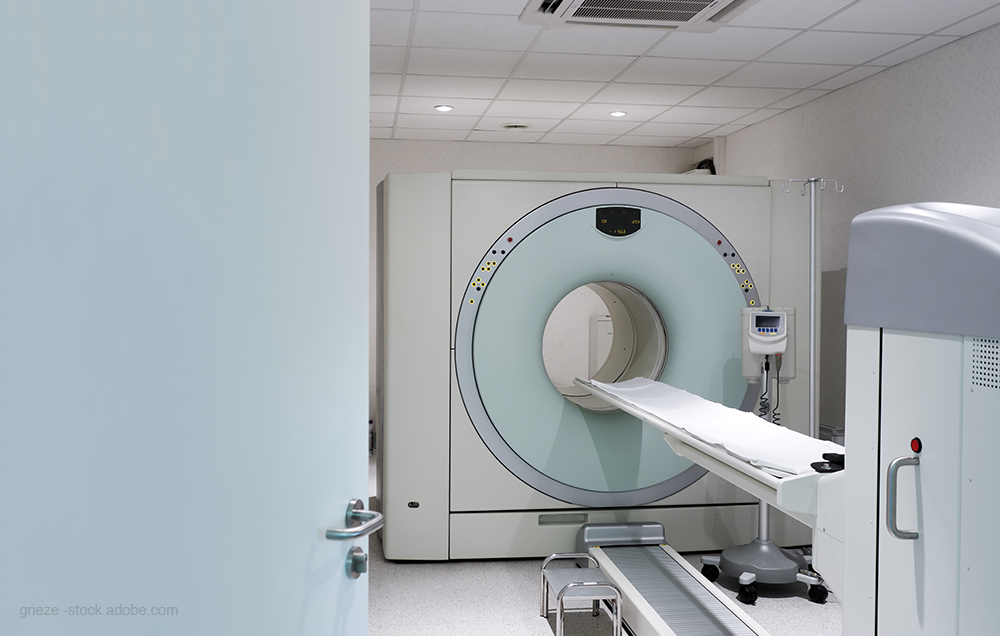Total-Body PET/CT Plus Innovative Image Reconstruction Yields Clear Cardiac Cycle Images
Total-body PET/CT scanner combined with innovative image reconstruction method offers good-quality images of changes in cardiac cycle, opening door to additional applications.

A total-body PET/CT scanner paired with an advanced sub-second molecular image technique can enable real-time blood-flow tracking and motion-frozen imaging of cardiovascular and respiratory functions, according to newly published research.
The findings, supported by funding from the National Institutes of Health and University of California Davis Innovative Development Award, were published in the Jan. 20 edition of the Proceedings of the National Academy of Sciences.
Investigators, led by UC-Davis project scientist Xuezhu Zhang, developed a 194-cm long total-body EXPLORER scanner, a three-dimensional medical imaging device that covers the entire body at once, allowing for simultaneous dynamic imaging of multiple organs with significantly higher sensitivity. They combined the machine with an innovative image reconstruction method called kernel expectation maximization.
“High temporal resolution PET is useful for studying blood flow, transit times, and fast radiotracer dynamics,” Zhang wrote. “It can also be used to freeze subject motion, either physiological, such as cardiac and respiratory motion, or involuntary body motion, thereby improving the effective spatial resolution of reconstructed images.”
The cardiac and respiratory motion captured in these PET images can also provide information for evaluating the biomechanical properties of various organs, he said. Study findings indicate combining the scanner and the reconstruction method allows for good-quality dynamic PET images at 100-ms temporal resolution.
For the study, researchers intravenously injected 256 MBq of 18F-fluorodeoxyglucose into the right leg of a healthy 60-year-old woman before conducting a 60-minute total-body dynamic scan. They divided the first-minute data into 100-ms temporal frames and analyzed reconstructed images in order to demonstrate the high temporal resolution of this method for capturing fast tracer dynamics and real-time cardiac motion.
Reconstructed dynamic PET image analysis revealed good image quality even though there were fewer than 1 million true coincident events in each temporal frame. The 100-ms dynamic PET images identified cardiac blood pool changes effectively throughout the cardiac cycle with a clear delineation of the end-systolic and end-diastolic phases. The images also clearly showed the flow of the radiotracer with each contraction of the heart.
In addition, investigators compared images of four regions of interest – the left ventricle, ascending aorta, descending aorta, and myocardium – gathered by both a standard whole-body scanner and dynamic PET imaging. Results indicated dynamic PET imaging provided better results.
Existing imaging systems, including angiography, CT, MRI, and ultrasound, can offer fast imaging and specific anatomical information, but none offer real-time molecular imaging of physiology and biochemistry with total-body coverage, Zhang said.
Ultimately, this imaging technique could offer improved imaging in other areas, as well.
“This high-temporal resolution tracer imaging technique opens up the opportunity for new applications, such as studying fast pharmacodynamics, using shorter-lived radionuclides, and performing motion-frozen scans of the heart, lung, and gastrointestinal tract,” he wrote.
Additionally, he said, PET with high temporal resolution has potential applications in pinpointing normal and abnormal brain functions by directly measuring the absolute value of cerebral blood flow and cerebral metabolic rate of oxygen.
Meta-Analysis Shows Merits of AI with CTA Detection of Coronary Artery Stenosis and Calcified Plaque
April 16th 2025Artificial intelligence demonstrated higher AUC, sensitivity, and specificity than radiologists for detecting coronary artery stenosis > 50 percent on computed tomography angiography (CTA), according to a new 17-study meta-analysis.
The Reading Room: Racial and Ethnic Minorities, Cancer Screenings, and COVID-19
November 3rd 2020In this podcast episode, Dr. Shalom Kalnicki, from Montefiore and Albert Einstein College of Medicine, discusses the disparities minority patients face with cancer screenings and what can be done to increase access during the pandemic.
Could Lymph Node Distribution Patterns on CT Improve Staging for Colon Cancer?
April 11th 2025For patients with microsatellite instability-high colon cancer, distribution-based clinical lymph node staging (dCN) with computed tomography (CT) offered nearly double the accuracy rate of clinical lymph node staging in a recent study.